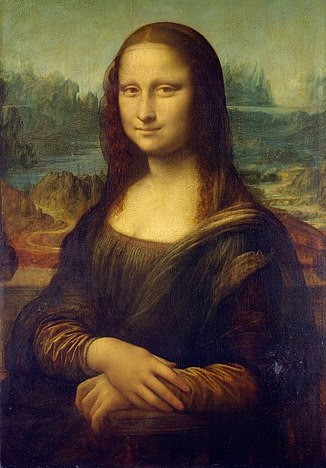

The Mona Lisa by Leonardo DaVinci is probably the most famous piece of artwork in the world. Why is that? Was it because Leonardo was so famous himself? Was it his skill, style, or choice of subject? He was, no doubt a Master Artist and he did phenomenal work, but why does a portrait of a noblewoman from Florence still hold the attention of people centuries later? Perhaps it’s because he captured something intangible, mysterious and powerful. The two photos above are two portraits of the same subject. One is the Mona Lisa that is hanging in the Lourve in Paris, and the other is The Isleworth Mona Lisa. The Isleworth Mona Lisa is what some people believe to be, an earlier rendition of the final portrait. Others don’t believe that Leonardo was the artist at all, while some think that it is simply a copy of his masterpiece. Whether it is truly a Leonardo or just a copy, there is something in Leonardo’s Mona Lisa that simply isn’t in any other copy of it. If you look at these two photos, one is a portrait and the other is a feeling, captured in paint. And if you don’t think too much about it, you can tell straight away. It’s like your soul sees under the layers of paint and dirty varnish. That something is what stands the test of time. To capture that intangible something is what every artist aspires to.
Art should not have the answers, it should ask the questions. I believe it is not the job of the artist to take a stand, but to be a container, to open doors and to allow people to experience more deeply. It is the calling of the artist to hold the broken pieces of the world and help people find meaning in them. To do that the artist must put a piece of their own soul on display and that takes courage and humility.
What is that intangible something? It’s an invisible medium that all artists work with, whether they know it or not. If you’re making art, true art, from your very soul, it’s instinctual. The simple act of attempting to look into the dark, unknown parts of this world and give them a place in reality, that is something. Art is turning something abstract, a feeling, into something concrete. Something tangible, whether it’s music, books, food, film, dance, sculpture or a painting. That something is what tethers our souls to this world, and sometimes we are able to translate it into the language our souls speak.
“Art is either plagiarism or revolution.” – Paul Gauguin.
This quote has haunted me ever since I read it. It was my senior year of high school and my teacher asked me what I thought the quote meant, since I was an artist myself. I was stumped. At the time, most of my work had been drawings, from photographs. I felt like I was plagiarizing and that none of my art was truly mine. What was the point of my art and if I was just a copycat, did I have any claim to what I created? Was I truly an artist, or simply, a plagiarist and didn’t know it. It made me rethink what I was doing and to question what truly makes an artist and what makes their work meaningful. After four years of thinking about what this meant I think I finally came to an answer or at least the beginning of one.
What is plagiarism? Copying and taking credit for something that isn’t yours. But you cannot copy what you cannot taste, hear, or see. Plagiarism is taking something great and copying it without the greatness. Its fool’s gold. It looks identical but its missing all the value. It disgraces the original. No matter how good the forgery, it cannot have that intangible something, that something that grabs the soul and just won’t let go. That something, that feeling, feels like a revolution.
This quote has always made me think of the American Revolution, but I kept telling myself that Gauguin didn’t mean an actual revolution, he meant a metaphorical one, because real revolutions involve war and what does that have to do with art? Revolutions aren’t just about war, they are so much more than that, especially with the American Revolution. The Patriots of the Revolution did something that had never been done, with ideas that hadn’t been thought of, and the best part, they were underdogs. They knew the consequences of their actions but they did it anyway. They seemed to be fearless even with the knowledge that they were outnumbered. They had an undeniable pull to do something, even if they didn’t know why. The revolution woke up the good parts and the bad parts of humans. It created new values and principles, by having the willingness to create a path into the unknown. That is what good art does, it opens doors and paths into the unknown parts of yourself. It wakes up the good parts and the bad parts of people. It has an undeniable pull to something. Something bigger than us. Good art makes you question, and isn’t that what usually starts revolutions? Plagiarism is a copy of what is already known. It is safe, predictable and unsatisfying. A revolution is the beginning of something new. It is dangerous, exciting and it shows you who you are and what you’re made of. What makes a true artist is the willingness to walk the path into the unknown parts of the soul.
Millie Barlow July 1, 2019